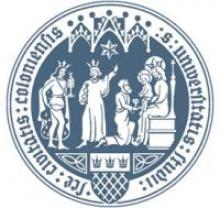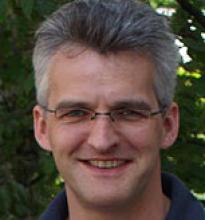- Home
- About
- Partners
- Newcastle University
- University of L'Aquila
- University of Manchester
- Alacris Teranostics GmbH
- University of Pavia
- Polygene
- Consiglio Nazionale delle Ricerche
- INSERM
- Certus Technology
- Charité Universitaet Medizin
- GATC Biotech
- University Medical Center Hamburg Eppendorf
- Evercyte GmbH
- University Hospital of Cologne
- PRIMM Srl
- University of Freiburg
- University of Antwerp
- Finovatis
- Research
- SYBIL at a glance
- Bone
- Growth plate
- Desbuquois dysplasia
- Diastrophic dysplasia
- MCDS
- Osteopetrosis
- Osteoporosis
- Osteogenesis imperfecta
- Prolidase deficiency
- PSACH and MED
- Systems biology
- SOPs
- Alcian Blue staining
- Bone measurements
- BrdU labelling
- Cell counting using ImageJ
- Chondrocyte extraction
- Cre genotyping protocol
- DMMB assay for sulphated proteoglycans
- Densitometry using ImageJ
- Double immunofluorescence
- Electron microscopy of cartilage - sample prep
- Extracting DNA for genotyping
- Grip strength measurement
- Histomorphometry on unon-decalcified bone samples
- Immunocytochemistry
- Immunofluorescence
- Immunohistochemistry
- Quantitative X-ray imaging on bones using Faxitron and ImageJ
- Skeletal preps
- TUNEL assay (Dead End Fluorimetric Kit, Promega)
- Toluidine Blue staining
- Toluidine Blue staining
- Von Kossa Gieson staining
- Wax embedding of cartilage tissue
- Contact Us
- News & Events
- Links
- Portal
University Hospital of Cologne
 The University Hospital of Cologne is one of the largest in Germany with 6800 employees and 59 Departments and Institutions. The University of Cologne is one of the 11 Excellence Universities in Germany employing 1,000 researchers and with an annual turnover of over 500 million euro. Center for Biochemistry located in the Institute for Biochemistry II has a long standing scientific expertise in extracellular matrix biology, biochemistry of cartilage proteins and glycobiology.
The University Hospital of Cologne is one of the largest in Germany with 6800 employees and 59 Departments and Institutions. The University of Cologne is one of the 11 Excellence Universities in Germany employing 1,000 researchers and with an annual turnover of over 500 million euro. Center for Biochemistry located in the Institute for Biochemistry II has a long standing scientific expertise in extracellular matrix biology, biochemistry of cartilage proteins and glycobiology.
University Hospital of Cologne roles in SYBIL
UKK will use a morpholino approach to knock down 'new' or 'existing' genes implicated in rare genetic skeletal diseases (GSDs) to prove pathogenesis and/or prior to making mouse models. These genes would be those identified by NGS of many patients with rare GSDs and therefore the identity of some of them is not known at this time. The results will help to decide which mouse models should be chosen for further analysis.
Facilitites available at UKK include a zebrafish facility, mouse facility, bioanalytical laboratory, central cell sorting facilitiy, confocal laser microscopy, and a histopathological core unit.
University Hospital of Cologne scientists involved in SYBIL
Prof Raimund Wagener – senior lecturer, since 1996 specific expertise in VWA domain containing extracellular matrix proteins.
Prof Mats Paulsson – Full Professor, since 1983 specific expertise in basement membrane and cartilage proteins.
 Dr Frank Zaucke – senior lecturer, since 2001 specific expertise in the biology of skeletal diseases. The interest of our group lies in the elucidation of the molecular mechanisms of heritable cartilage diseases. We therefore deal with the effects of mutations in cartilage-specific proteins of the extracellular matrix. In focus are different chondrodysplasias caused inter alia by mutations in the genes for COMP (Pseudoachondroplasia [PSACH], multiple epiphyseal dysplasia [MED]) and Collagen II (Stickler syndrome, Spondyloepiphyseal dysplasia congenita [SEDC]). We have set ourselves the task of studying the mechanisms in vitro and in vivo.
Dr Frank Zaucke – senior lecturer, since 2001 specific expertise in the biology of skeletal diseases. The interest of our group lies in the elucidation of the molecular mechanisms of heritable cartilage diseases. We therefore deal with the effects of mutations in cartilage-specific proteins of the extracellular matrix. In focus are different chondrodysplasias caused inter alia by mutations in the genes for COMP (Pseudoachondroplasia [PSACH], multiple epiphyseal dysplasia [MED]) and Collagen II (Stickler syndrome, Spondyloepiphyseal dysplasia congenita [SEDC]). We have set ourselves the task of studying the mechanisms in vitro and in vivo.


